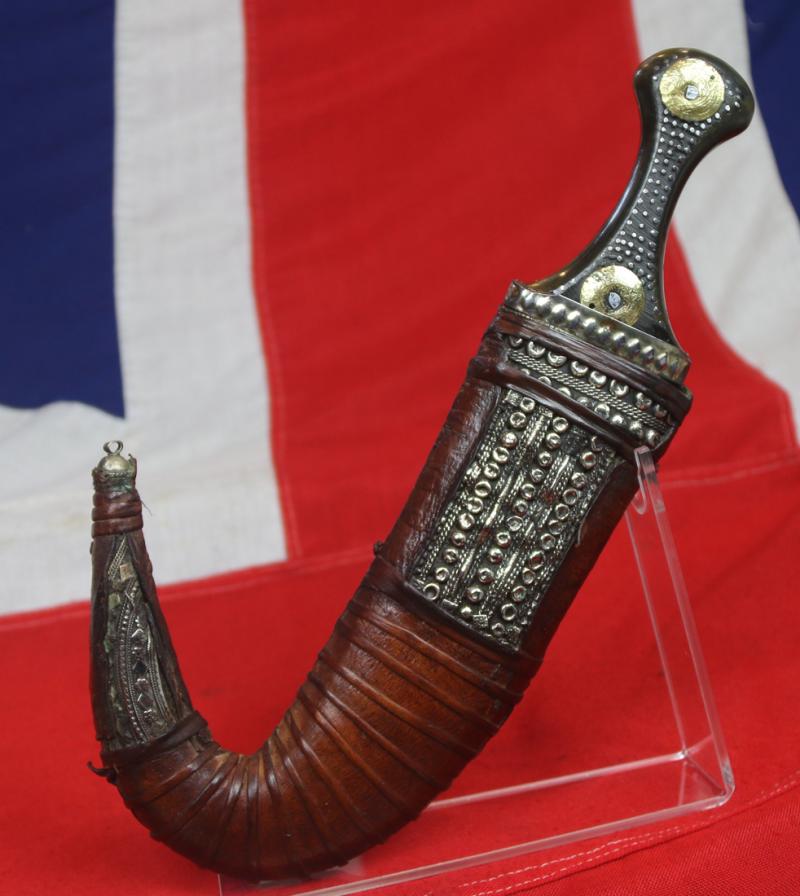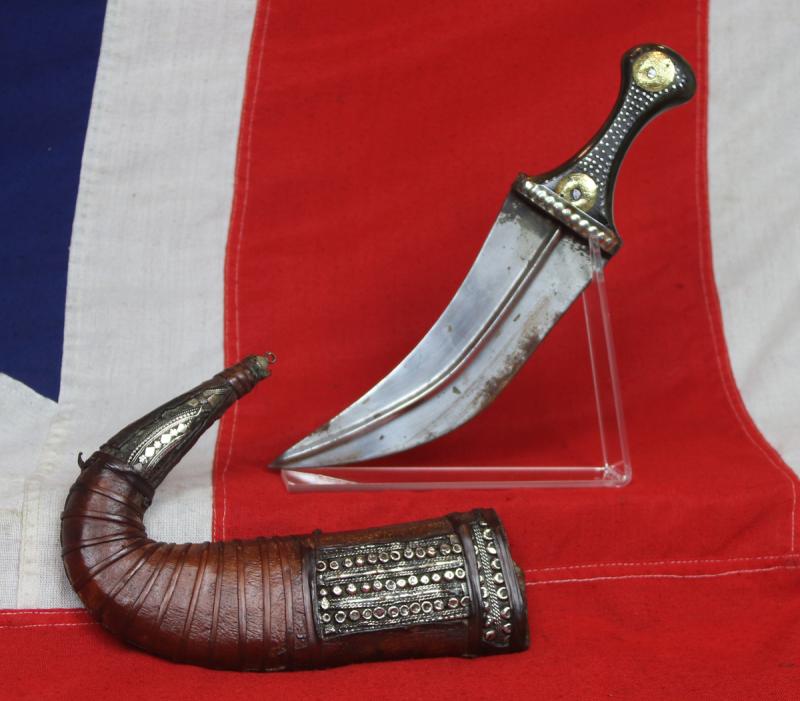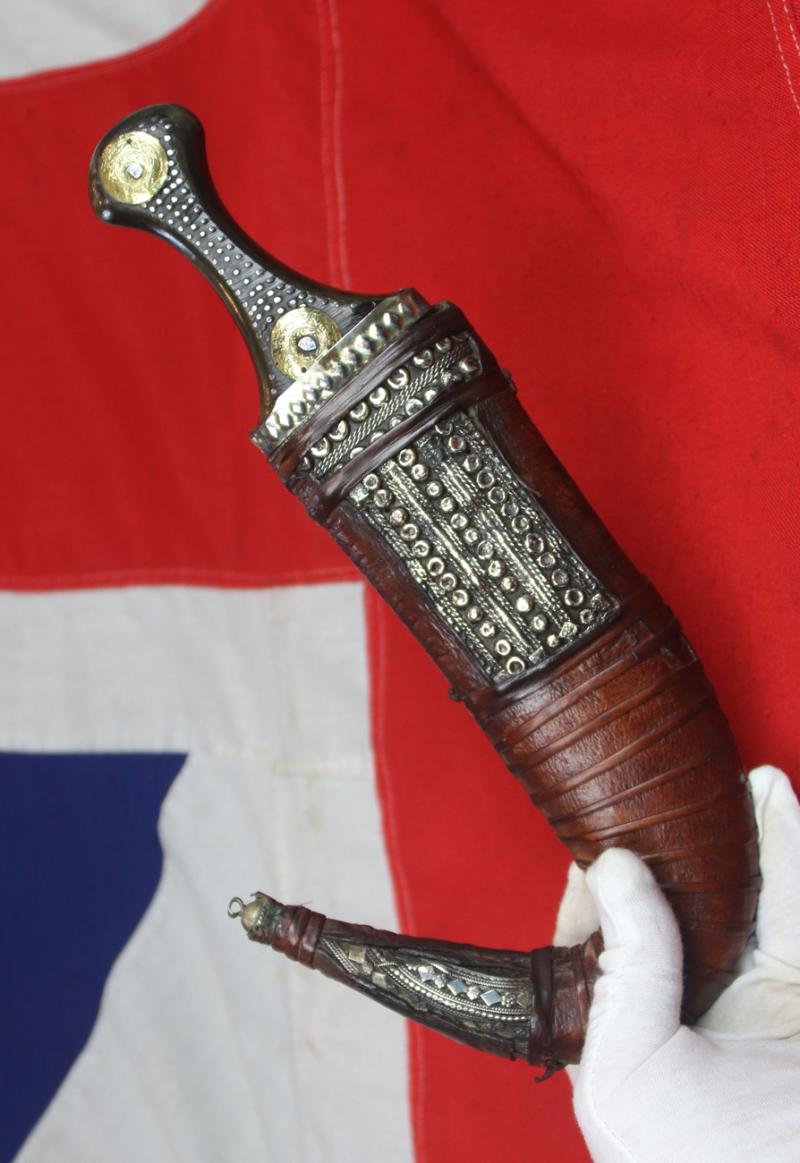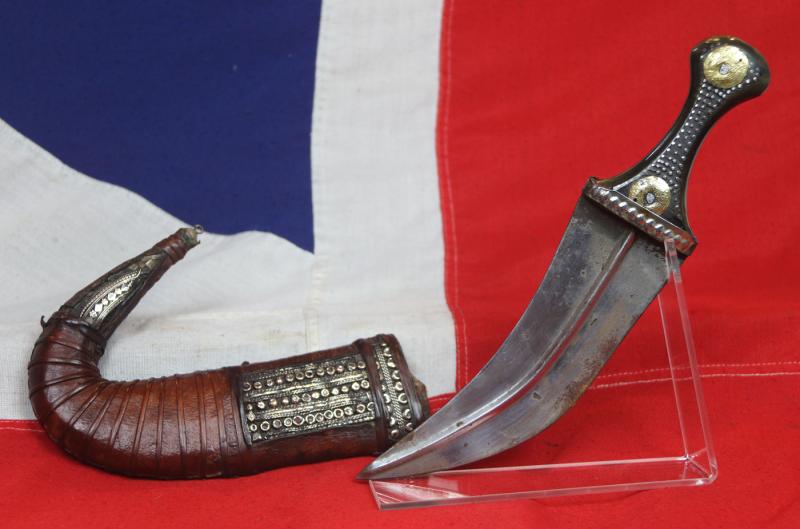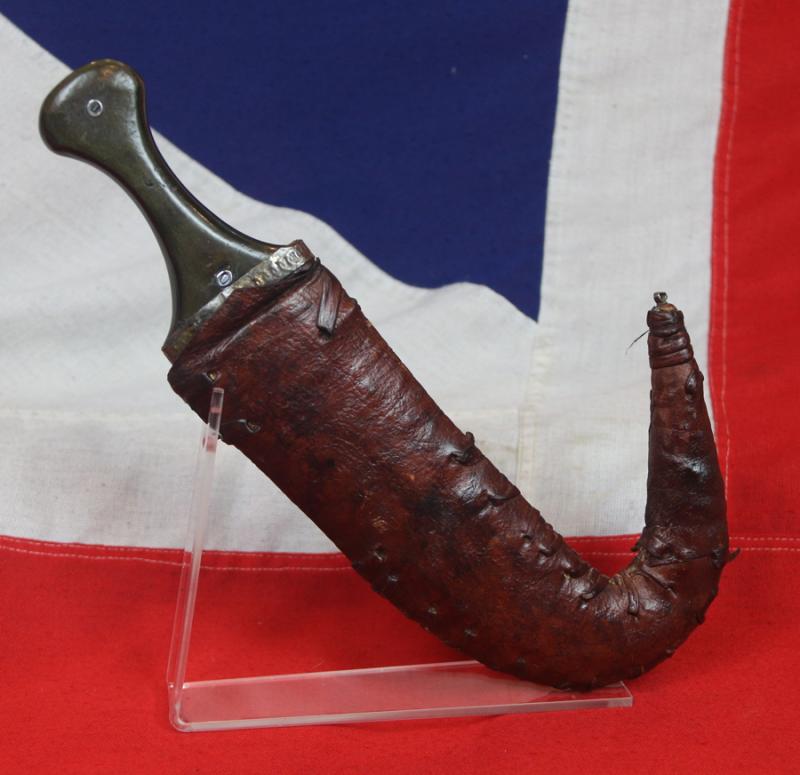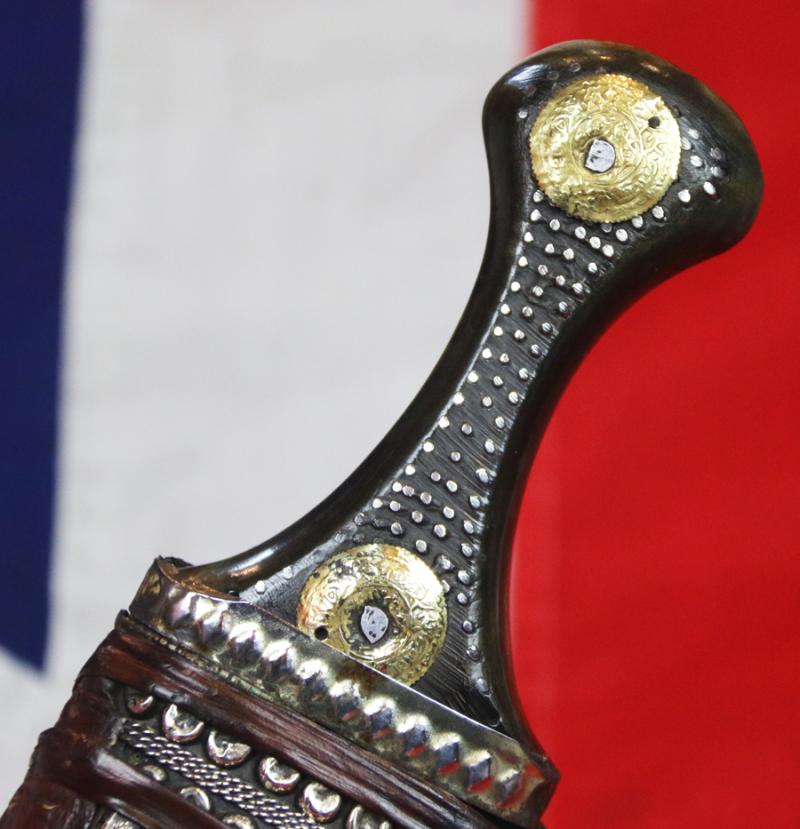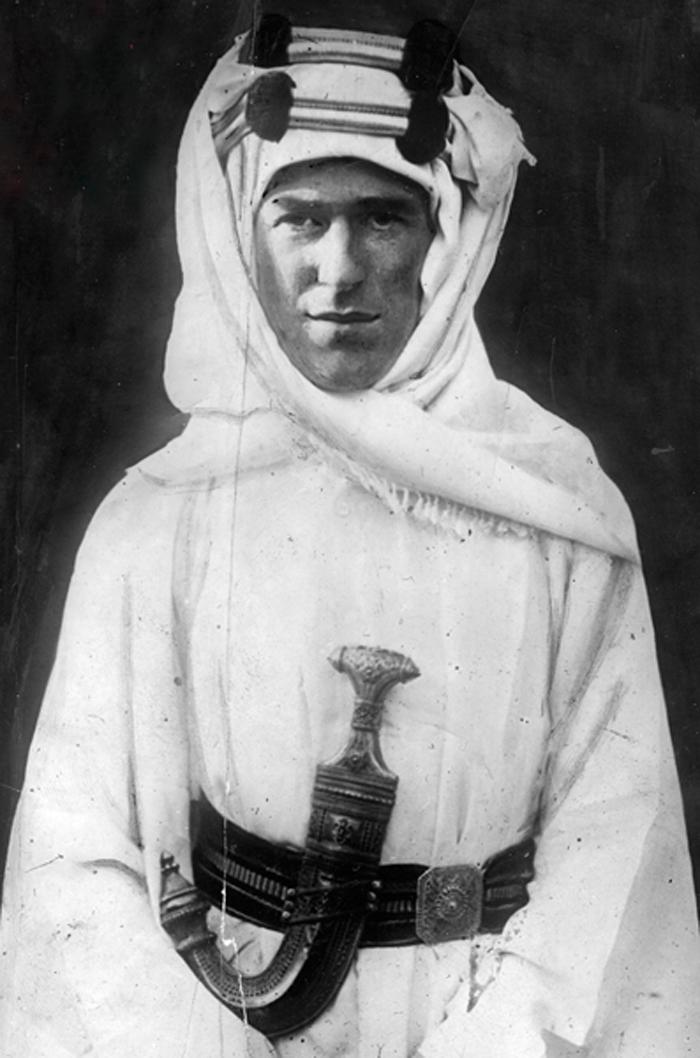A Yemeni Jambiya A Stunning WW1 Yemeni 'Lawrence of Arabia's' Favoured Pattern of Jambiya
Just returned from over 30 hours of specialist hand conservation to clean and conserve the whole dagger, and a remarkable result has been achieved, but it was simply a labour of love, as it's stored condition was most sad indeed. Likely this intriguing piece was acquired from a souk in Arabia sometime after the war.
Very similar to Lawrence of Arabia's jambiya when he was serving in WW1 in the Turkish Campaign in Arabia. The word jambiya actually means “something worn at one’s right side” (from the triliteral root j-n-b). Lawrence of Arabia had several very similar ones presented to him, they were his favourite dagger, and he was frequently photographed wearing them. One picture is a portrait of Lawrence with his Jambiya, most similar to this example. photo for historical context information only and not included It is made from silver metal, but usually, more often than not, coin silver, certainly not English hallmarked silver. The jambia, a curved Islamic dagger, is the main customary accessory to the clothing worn by Arabian men. For centuries the people of South Arabia have inherited the their jambiahs from generation to generation. There are several theories about the origin of the Jambia. There are historical facts, concerning the existence of the Jambia revealing that it used to be worn at Sheban times, in the Himiarite kingdom. They take the statue of the Sheban king (Madi Karb 500 bc ) as proof. This statue, which was discovered by an American mission in Marib in the 1950s, was found to be wearing a Jambia.
Reference; a Lanes Armoury *Special Conservation* Item, restored and conserved in our workshop, see info page for details on our conservation principles.
Code: 24682
895.00 GBP

